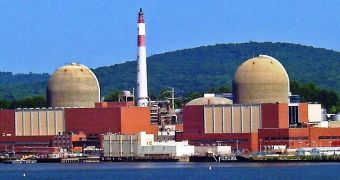

We hypothesize some 1.1 billion kilowatts of nuclear capacity at that time generating slightly less than 7 trillion kilowatt-hours annually. “By the year 2000 the Gross National Product will approximate $3 trillion. Remarks, Fourth International Conference on Plutonium and Other Actinides, Santa Fe NM, October 5, 1970, page 7. Long-term local cancer reductions following nuclear plant shutdown. Infant death and childhood cancer reductions after nuclear plant closing in the United States. Mangano JJ, Gould JM, Sternglass EJ, Sherman JD, Brown J, McDonnell W. Journal Articles on Local Cancer Reductions After Nuclear Reactor Closing “Now, more than a decade later, the project originally projected to cost $14 billion and be complete by 2017, has seen costs nearly double and schedules delayed by more than 5 years.” December 23, 2020. Vogtle Units 3 & 4 (VCM 23): Six more months, $700 million more dollars. Vogtle (Georgia) project to build a new nuclear plant. The end of the nuclear power era in the New York metropolitan area is also the start of a new and more permanent era, one that removes a major public health risk at a lower cost. Wind and solar pose no health risk – and cost less. States like Kansas and Iowa already get about half of their electric power from renewables. Where does the replacement electricity come from? Last year, renewable sources like solar and wind power exceeded the nuclear share by reaching 21% this number will soar to 42% by 2050, while the nuclear portion declines to about 15%. Japan, which had 54 operating reactors before the 2011 Fukushima meltdown, now has nine in operation most of the others will never re-start. Some countries, like Germany and Switzerland, are phasing out reactors. states never had reactors in the first place. However, shutdown reduces health threats. There will be no catastrophic core meltdown like Three Mile Island, Chernobyl, and Fukushima and radioactive waste, some of which is released to the environment, will cease.Ĭontentions that nuclear power is a needed part of our energy mix are misguided. reactors on 9/11 one of the attacking planes flew directly over Indian Point.Ī closed Indian Point still requires managing the huge amount of toxic waste for thousands of years. Security became expensive, especially after revelations of Al-Qaeda’s plans to crash a plane into U.S. Containing radioactivity is a complex process, requiring large numbers of specialized personnel, extensive systems of mechanical parts, and frequent accuracy checks. Reactors are expensive for a reason – because they are dangerous. Lenders, hit with huge construction cost overruns, stopped new orders in the late 1970s. reactors never materialized only 128 ever operated, and that number is now 93 and falling. Just five reactors ever operated within 100 miles of Manhattan all are now permanently closed. The unused buildings still stand, and construction costs included in Long Island electric bills. When Shoreham was ready, Mario Cuomo’s administration did not budge. The Shoreham reactor took two decades to build, with staggering cost overruns, as warnings from state regulators to forbid operation were ignored, as evacuation after a meltdown was impossible. The proposed Ravenswood reactor, just across the East River from the United Nations, evoked protests from concerned citizens and even opposition from the usually supportive Atomic Energy Commission, due to the proximity of the most densely populated area in the nation. Most proposals never went beyond the drawing board. Locations included underground reactors at Central Park and Roosevelt Island Ravenswood, Queens Bayonne, New Jersey a man-made island off Brooklyn City Island, near the Bronx Connecticut’s Long Island Sound waterfront and Long Island Ideas swirled for new reactors in and around New York City, ideas that today would be considered dangerous to millions. Utilities, encouraged by politicians in both parties, scrambled to prepare proposals. electricity would be generated by over 1,000 reactors. The Atomic Energy Commission predicted that by now, 70% of U.S.

Removing reactors means removing a health threat, as studies show declining cancers in local children soon after shutdowns, and declines for adults over time.Ī half century ago, the idea of a nuclear-free New York seemed unlikely. No others are planned, and Indian Point 3 marks the 12 th reactor shut in the past eight years, with more to follow. plant is under construction, a still-incomplete project of 15 years costing $28 billion. The permanent shutdown of the Indian Point 3 nuclear reactor on April 30 means that for the first time since 1962, no reactors are operating within 100 miles of New York City. Photograph Source: Tony Fischer – CC BY 2.0


 0 kommentar(er)
0 kommentar(er)
